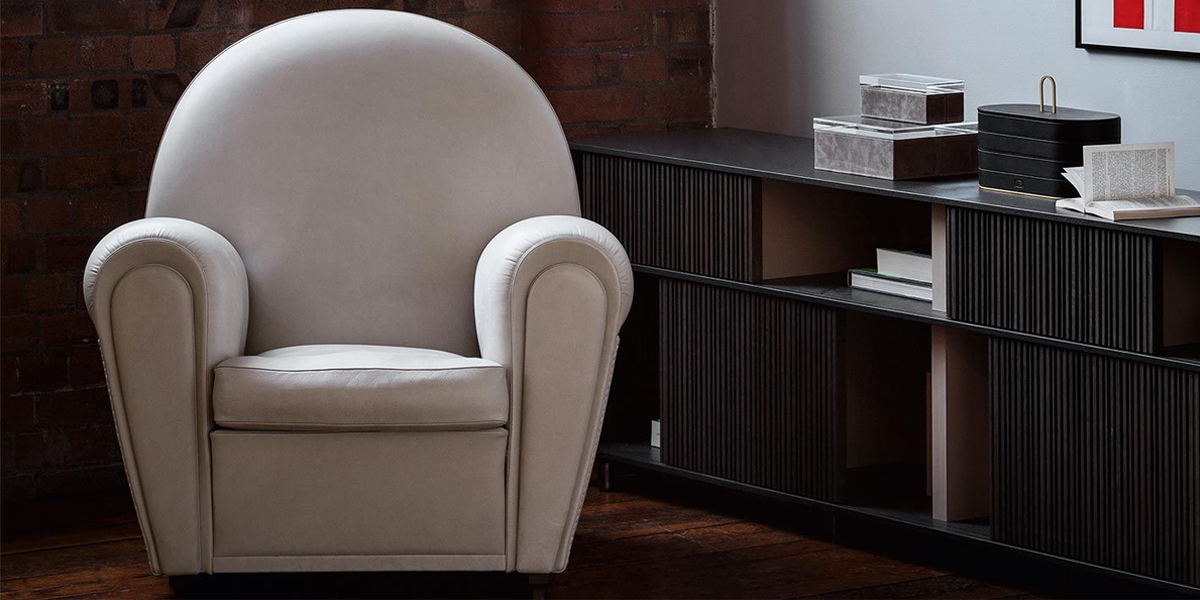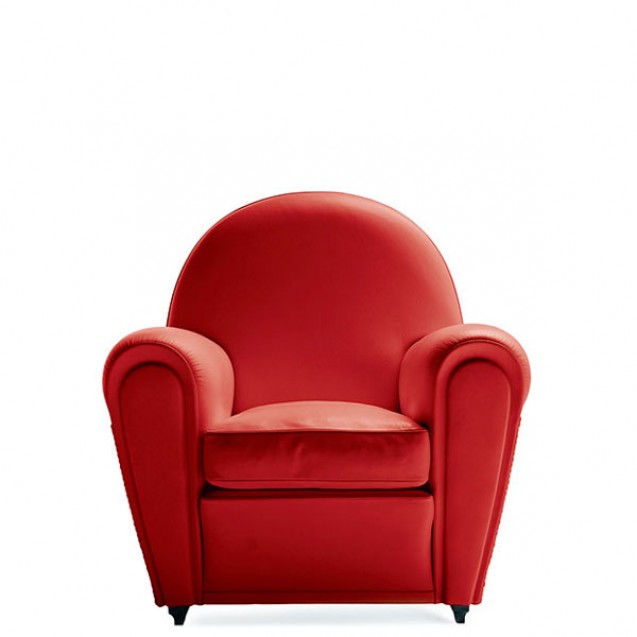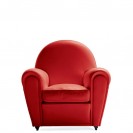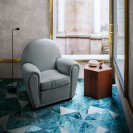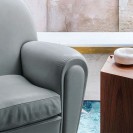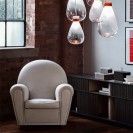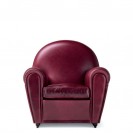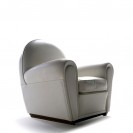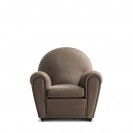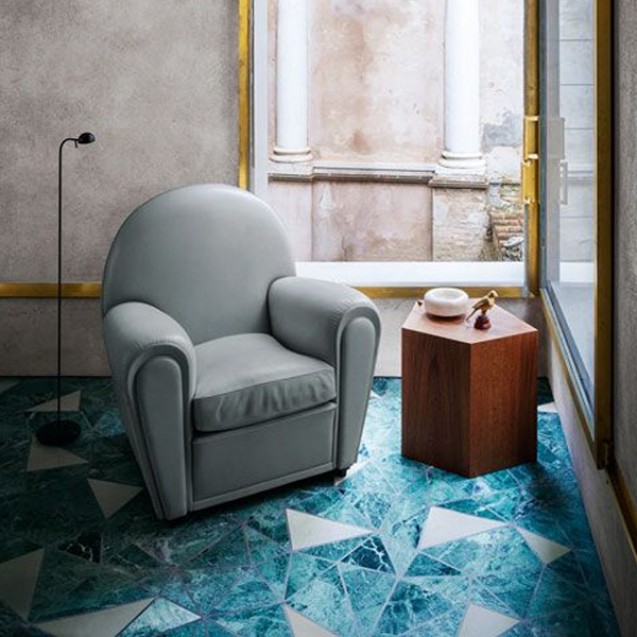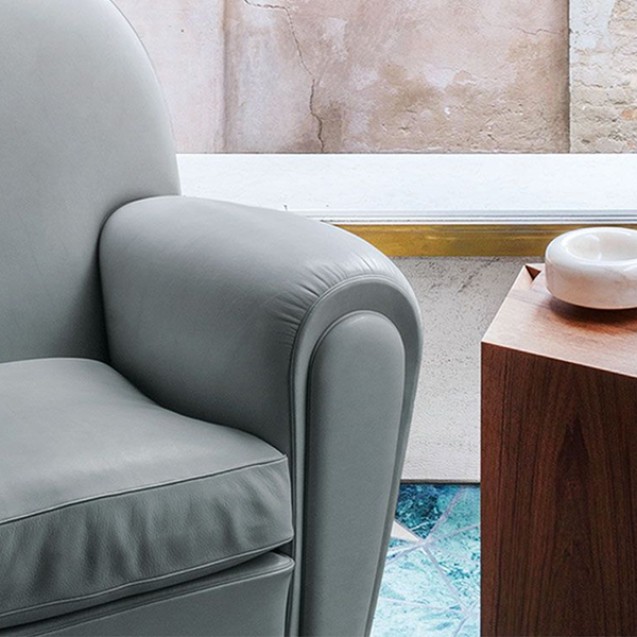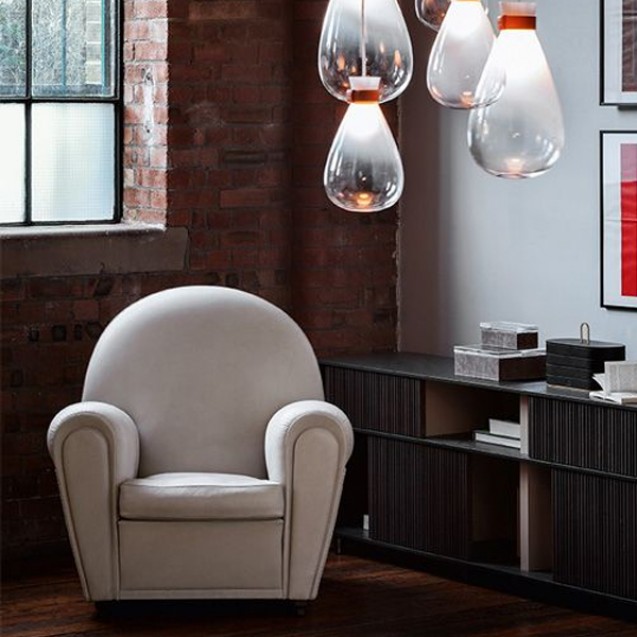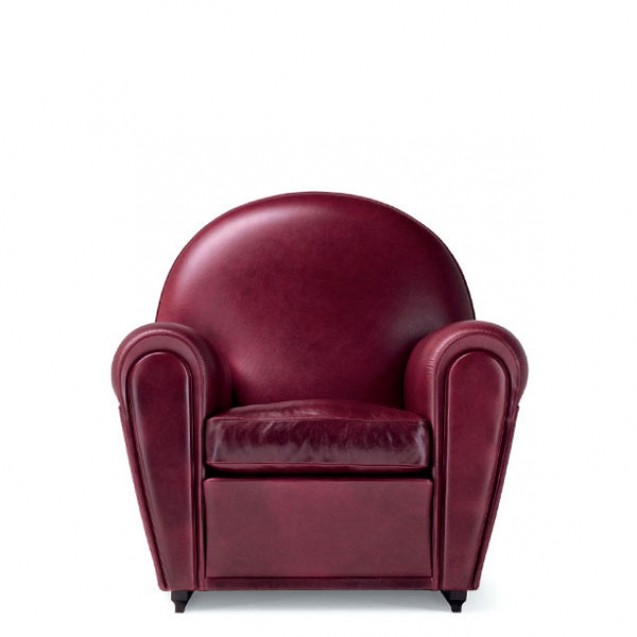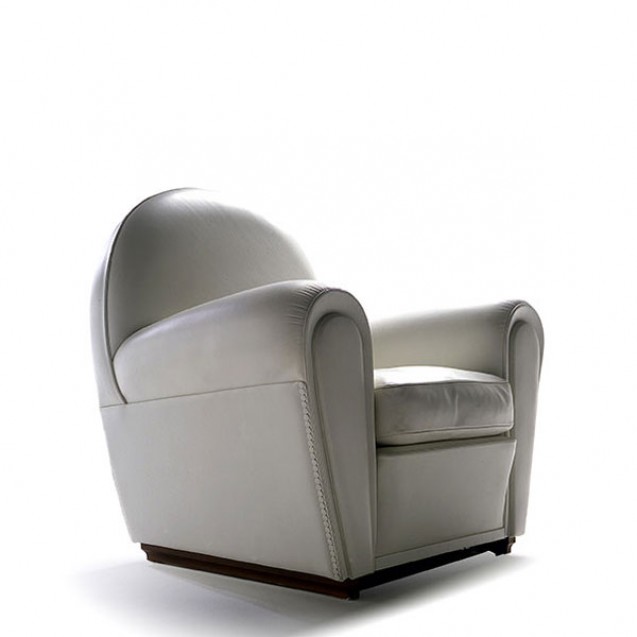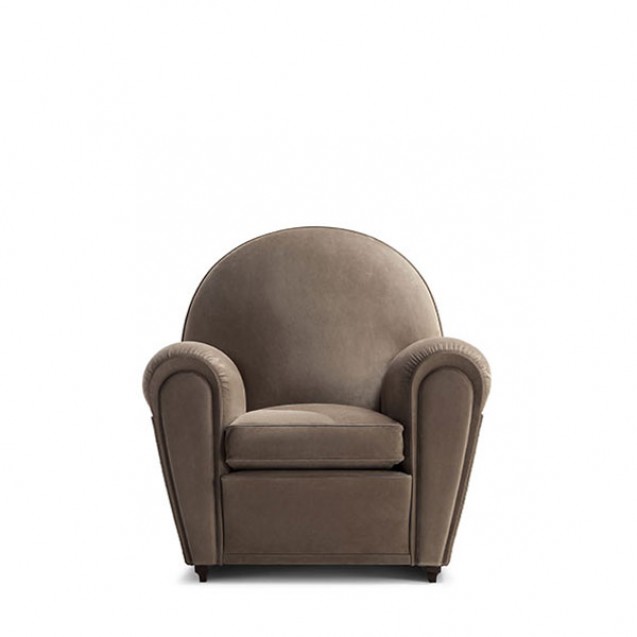Vanity Fair
Officially called “model
904” but known, since 1984, as Vanity Fair, over time this seat has become the
emblem of Poltrona Frau. It is thought that the project, which first went into
production in 1930, was developed on the basis of designs that Renzo Frau left his wife, Savina.
The deliberately volumetric configuration of the Vanity Fair armchair saw it become one of the universal icons
of Italian design. Also available in a “baby” version, exactly two thirds the
size of the original, Vanity Fair is also a comfortable pouf. The supporting
structure of the Vanity Fair armchair is made from solid seasoned beech. The
padding uses both hand-shaped vegetable horsehair and rubberised horsehair and
the seat cushion is in goose down. The seat, backrest and armrest spring system
consists of hand-tied steel biconical springs attached to jute belts. A row of
leather-covered pins refines the back and sides of the armchair. The upholstery
is available in Pelle Frau® leather or fabric. Numbered edition series with a 24kt gold-plated
label.
| About Designer | |
|---|---|
Renzo Frau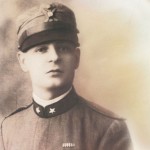 |
Lorenzo Frau, known as ‘Renzo’, was born in Cagliari
in 1881. He left Sardinia for military service in Milan, which he completed
successfully earning the title of lieutenant. He married Savina Pisati and
moved to Turin, at the time a real hub of Italian culture.
He initially worked as a sales
representative for Gribaudi and then for Dermoide Patent, manufacturer of faux
leather. Having moved to Great Britain for work, he was able to discover the
Chesterfield model armchairs and immediately imagined its potential, successfully
starting to import it into Italy. At the same time, however, he was also
attracted by the models of French and Central European style. He therefore
decided to create his own artisan production laboratory. It was 1912: Poltrona
Frau was created. From the initial work ‘in style’, Frau quickly moved onto
direct design. Poltrona Frau became not only a production pole, but also a
meeting point for artists and intellectuals. Renzo Frau used these relations to
consolidate the brand image: successful models ensued quickly, one after the
other. As the First World War broke out, Frau was called to fight for his
country and his wife Savina bravely took up the reins of the company. Frau’s
armchairs thus began entering the most important buildings, also used by the
royal family. Renzo Frau met an early death in 1926. He left an extensive
archive of projects that would allow his wife to coherently pursue Poltrona
Frau production in the years to come. |
